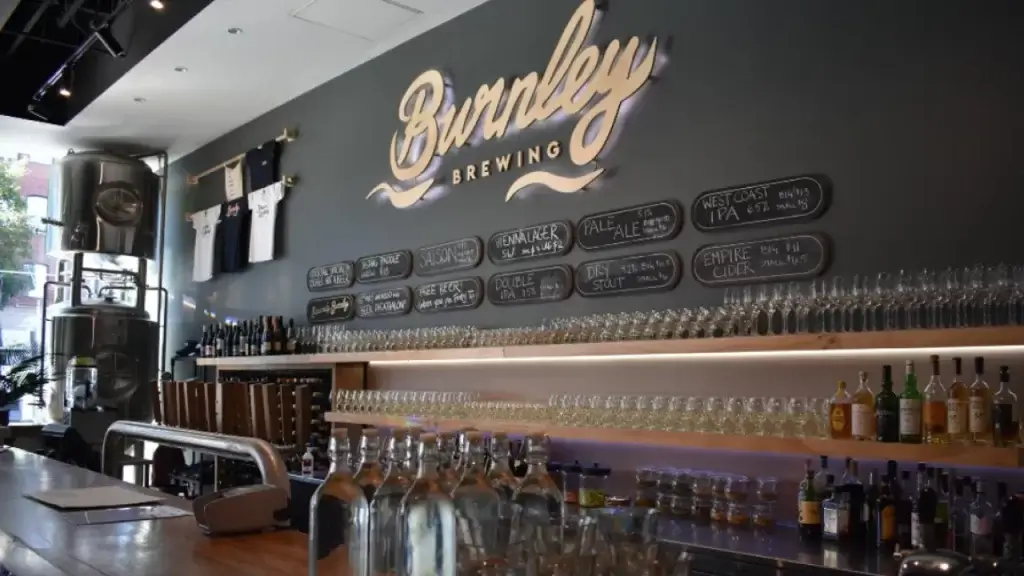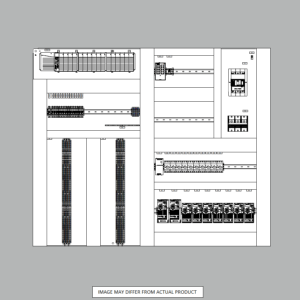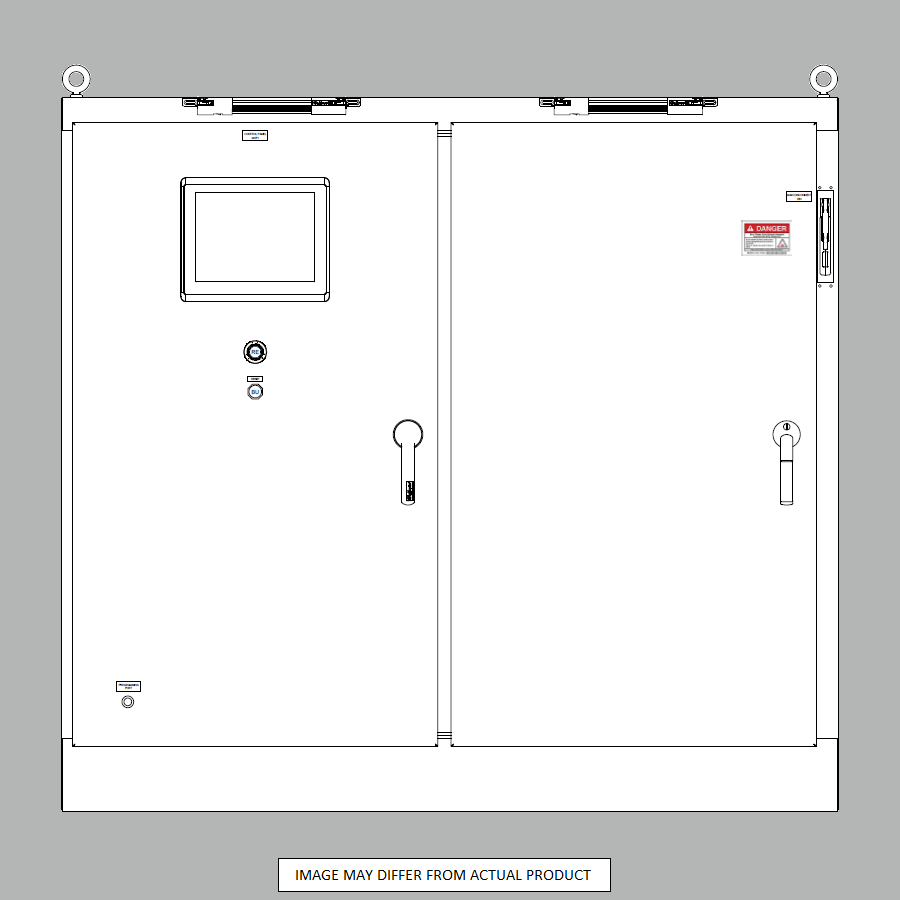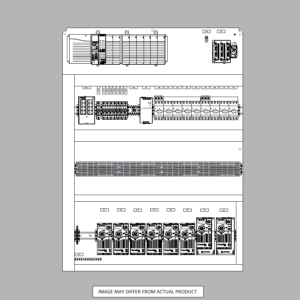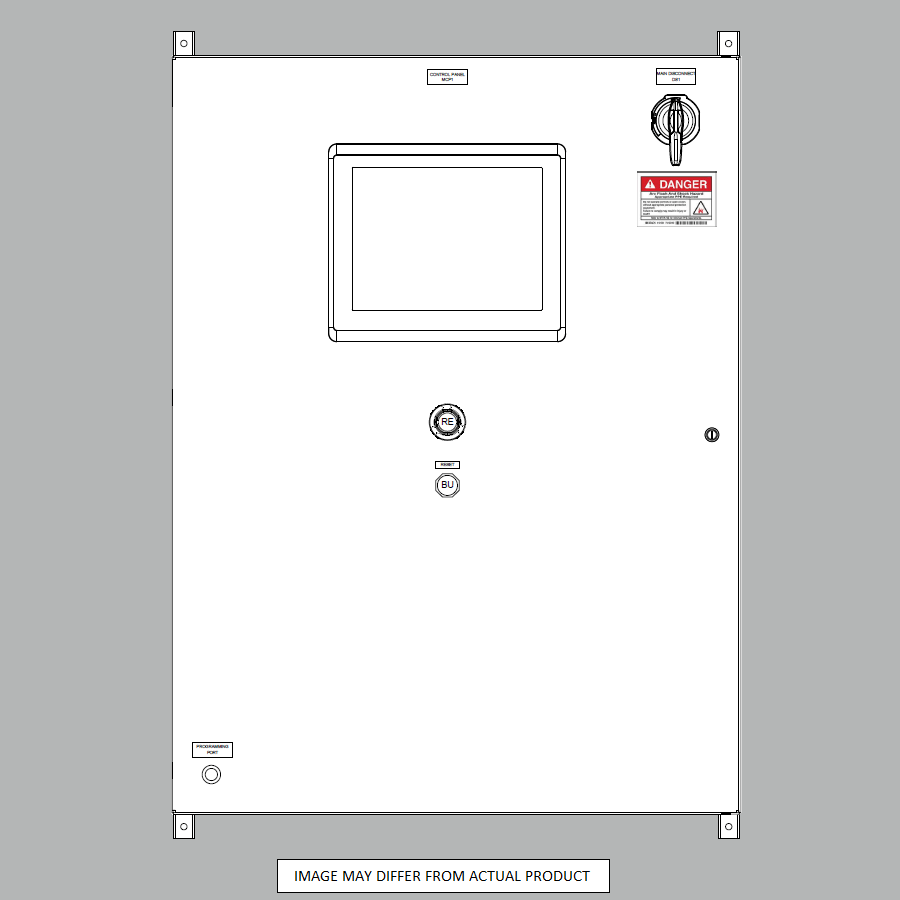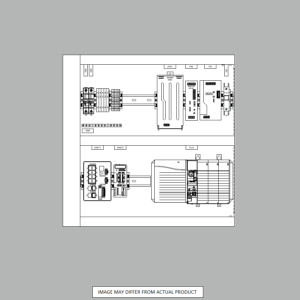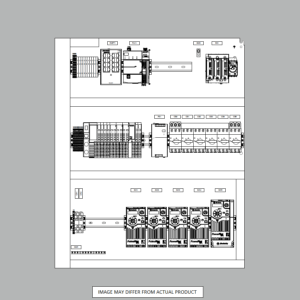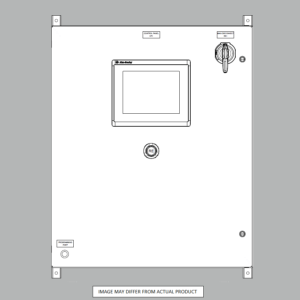Beer Brewing Process: Journey from Grain to Glass
Ah, the allure of a perfectly crafted beer! Have you ever gazed into your pint glass, admiring the rich color and tantalizing aroma, and wondered about the intricate journey that brought this liquid gold to life? From the humble grain to the final, effervescent sip, brewing is a fascinating blend of art and science that has captivated humanity for millennia.
In this deep dive into the world of beer brewing, we’ll unravel the mysteries behind your favorite brews. We’ll explore:
- The essential ingredients that form the foundation of every beer
- The step-by-step process of beer brewing that transforms simple elements into complex flavors
- The crucial role each beer brewing stage plays in shaping the final product
So grab a cold one, settle in, and let’s embark on a journey through the captivating world of beer brewing!
The Fundamental Ingredients of Beer Brewing
At its core, beer is a beautifully simple concoction. Four primary ingredients form the backbone of nearly every brew you’ve ever tasted. Let’s take a closer look at these brewing building blocks:
Water: The Unsung Hero
Water might seem like a bland starting point, but it’s the canvas upon which brewers paint their liquid masterpieces. The mineral content and pH of water can dramatically alter a beer’s flavor profile. For instance, the famously hard water of Burton-on-Trent in England gave birth to the crisp, hoppy bitters that region is known for. On the flip side, the soft water of Pilsen in the Czech Republic paved the way for the delicate, golden lagers that bear the city’s name.
Brewers often tweak their water chemistry to mimic famous brewing regions or to complement specific styles. It’s a subtle art, but one that can make or break a brew.
Malt: The Soul of Beer
If water is the canvas, malt is the rich palette of colors that give beer its backbone. But what exactly is malt? Simply put, it’s grain (usually barley) that has been allowed to partially germinate before being quickly dried. This process creates enzymes and unlocks the starches that will eventually become fermentable sugars.
The type of malt used and how it’s roasted plays a huge role in determining a beer’s color and flavor. Pale malts create the golden hues of lagers and pale ales, while deeply roasted malts bring forth the inky blackness and coffee notes of stouts and porters. Specialty malts can add hints of caramel, biscuit, or even smoke to the final brew.
Hops: The Spice of Brewing Life
Ah, hops – the ingredient that has sparked a revolution in craft brewing. These little green cones are the female flowers of the hop plant, and they pack a flavorful punch. Hops serve three primary purposes in beer:
- Bitterness: To balance out the sweetness of the malt
- Flavor: Adding notes that can range from citrusy to piney to floral
- Preservation: Hops have natural antimicrobial properties that help beer stay fresh longer
The world of hops is vast and ever-expanding. From the classic, spicy notes of European noble hops to the bold, tropical fruit flavors of New World varieties, hops give brewers an incredible palette to work with.
Yeast: The Magical Microbe
If malt and hops are the body and soul of beer, then yeast is the spirit that brings it all to life. These microscopic fungi are responsible for fermentation – the process that turns sweet wort into beer by consuming sugars and producing alcohol and carbon dioxide.
But yeast does more than just create alcohol. Different strains impart unique flavors and aromas to beer. Broadly speaking, brewers work with two main types of yeast:
- Ale Yeast: Ferments at warmer temperatures, often producing fruity esters and working quickly
- Lager Yeast: Prefers cooler temperatures, works slowly, and creates clean, crisp flavors
The choice of yeast strain can dramatically alter the final character of a beer, even if all other ingredients remain the same.
Adjuncts: The Wild Cards
While not essential, many brewers incorporate additional ingredients to create unique flavor profiles or adjust the body of their beer. These can include:
- Grains like wheat, rye, or oats for added body or flavor
- Sugars to boost alcohol content without adding body
- Fruits, spices, or herbs for unique flavor combinations
From Belgian witbiers brewed with coriander and orange peel to chocolate stouts infused with coffee, adjuncts open up a world of creative possibilities for brewers.
The Step-by-Step Beer Brewing Process
Now that we’ve met the cast of characters, let’s walk through the brewing process step-by-step. It’s a journey that transforms simple ingredients into liquid art:
- Mashing
- Lautering
- Boiling
- Cooling and Aeration
- Fermentation
- Conditioning and Maturation
- Packaging
1. Mashing: Waking Up the Grains
Mashing is where the magic begins. The brewer combines crushed malt with hot water in a large vessel called a mash tun. This porridge-like mixture is held at specific temperatures to activate enzymes within the malt. These enzymes get to work breaking down complex starches into simple, fermentable sugars.
The mash temperature is crucial. Higher temperatures (around 158°F/70°C) produce a sweeter, fuller-bodied beer, while lower temperatures (around 148°F/64°C) create a drier, more fermentable wort. Brewers often use a combination of temperature rests to achieve the perfect balance for their desired style.
2. Lautering: Separating the Wheat from the Chaff
Once the mashing is complete, it’s time to separate the sweet, sugar-rich liquid (now called wort) from the spent grains. This process, known as lautering, typically involves draining the wort through the grain bed, which acts as a natural filter.
Many brewers perform a “sparge” during this step, gently rinsing the grains with hot water to extract every last bit of fermentable sugar. It’s a delicate balance – extract too aggressively, and you risk pulling unwanted tannins from the grain husks.
3. Boiling: The Hop Dance
With the wort collected, it’s time to crank up the heat. The boil serves several crucial purposes:
- Sterilization: Killing any unwanted microorganisms
- Concentration: Evaporating excess water to reach the desired gravity
- Hop utilization: Extracting bitterness, flavor, and aroma from hops
- Protein coagulation: Helping to create a clear final product
The boil typically lasts 60-90 minutes, with hops added at specific intervals. Early additions contribute primarily to bitterness, while late additions focus on flavor and aroma. This is where the brewer’s artistry really shines, as the timing and quantity of hop additions can dramatically alter the final beer.
4. Cooling and Aeration: Preparing for Yeast
After the boil, the hot wort needs to be rapidly cooled to fermentation temperature. This is crucial for several reasons:
- Preventing contamination: The wort is vulnerable to infection at warm temperatures
- Dropping out unwanted compounds: Rapid cooling helps proteins and tannins settle out
- Preparing for yeast: Most yeast strains prefer temperatures below 70°F (21°C)
Once cooled, the wort is typically aerated. This might seem counterintuitive (doesn’t oxygen make beer stale?), but yeast needs oxygen in its initial growth phase to create healthy cell walls.
5. Fermentation: Yeast Takes the Stage
With the stage set, it’s time for yeast to work its magic. The cooled, aerated wort is transferred to a fermentation vessel, and yeast is added (or “pitched,” in brewing lingo).
Over the next few days to weeks (depending on the style and yeast strain), the yeast will feast on the sugars in the wort, producing alcohol, carbon dioxide, and a host of flavor compounds. The brewer’s job now is to maintain the proper temperature and monitor the fermentation’s progress.
6. Conditioning and Maturation: The Waiting Game
After primary fermentation is complete, many beers benefit from a period of conditioning. This can involve:
- Lagering: Cold-storing beer for weeks or months to smooth out flavors
- Dry hopping: Adding hops to the fermenter for additional aroma
- Barrel aging: Storing beer in wooden barrels to impart unique flavors
- Secondary fermentation: Allowing the beer to continue fermenting at a slower rate, often with fruit or other adjuncts added
This stage is where flavors meld, harsh notes mellow, and the beer reaches its full potential.
7. Packaging: The Final Frontier
At last, it’s time for the beer to meet the world. Packaging options include:
- Bottling: Often with a small addition of sugar to create natural carbonation
- Kegging: Forced carbonation with CO2
- Canning: Increasingly popular in the craft beer world
Each method has its pros and cons, and the choice often depends on the brewery’s size and distribution plans.
Understanding the Importance of Each Step in the Beer Brewing Process
Every stage of the brewing process plays a crucial role in shaping the final beer. Let’s dive deeper into why each step matters:
Mashing: The Foundation of Flavor
The mash is where the beer’s basic character is established. The choice of malts, mash temperature, and duration all influence:
- Fermentability: Higher mash temperatures create more unfermentable sugars, leading to a sweeter, fuller-bodied beer
- Color: Darker malts contribute more color to the wort
- Flavor precursors: Many of the compounds that will develop into complex flavors during fermentation are extracted during the mash
A well-executed mash sets the stage for everything that follows.
Lautering: Efficiency is Key
Proper lautering is crucial for achieving good brewhouse efficiency – extracting the maximum amount of fermentable sugars from the malt. Poor lautering can lead to:
- Weak wort: Not enough extracted sugars, leading to a thin, low-alcohol beer
- Astringency: Over-sparging can extract harsh tannins from grain husks
- Cloudy beer: Improper filtration can lead to excess proteins and tannins in the wort
Boiling: Shaping the Final Product
The boil is where many of the beer’s final characteristics are locked in:
- Bitterness: The longer hops boil, the more isomerized alpha acids are extracted, increasing bitterness
- Flavor stability: The boil drives off unstable flavor compounds and creates melanoidins, which contribute to flavor stability
- Clarity: Proteins coagulate during the boil, helping to create a clearer final product
The choices made during the boil – hop varieties, addition timing, boil duration – have a massive impact on the beer’s final flavor profile.
Fermentation: Where Beer Becomes Beer
Fermentation is the heart of the brewing process. The yeast strain chosen and the conditions it’s given to work in determine:
- Alcohol content: Different yeast strains have different alcohol tolerances and attenuation rates
- Flavor profile: Yeast produces a wide range of flavor compounds, from fruity esters to spicy phenols
- Mouthfeel: Yeast activity influences the beer’s body and carbonation level
Careful control of fermentation temperature and duration is crucial for achieving the desired flavor profile.
Conditioning and Maturation: Refining the Flavor
The conditioning phase allows flavors to meld and harsh notes to mellow. It’s particularly important for:
- Lagers: Cold conditioning allows flavors to smooth out and unwanted compounds to drop out
- High-alcohol beers: Extended aging can help mask “hot” alcohol flavors
- Barrel-aged beers: Time in the barrel allows for the development of complex flavors
Proper conditioning can be the difference between a good beer and a great one.
Beer Brewing Methods and Styles
The brewing process we’ve outlined is the foundation for an incredible diversity of beer styles. Let’s take a quick look at some broad categories:
Lagers vs. Ales: A Tale of Two Yeasts
The primary divide in the beer world is between lagers and ales, determined by the yeast used:
- Ale yeast (Saccharomyces cerevisiae): Ferments at warmer temperatures (60-75°F / 15-24°C), typically produces fruitier, more complex flavors
- Lager yeast (Saccharomyces pastorianus): Prefers cooler temperatures (45-55°F / 7-13°C), creates cleaner, crisper flavors
Popular Beer Styles
The world of beer is vast, but here are a few popular styles and their characteristics:
- Pale Ale: Balanced, hoppy, often with citrus or floral notes
- India Pale Ale (IPA): Aggressively hopped, higher alcohol content
- Stout: Dark, roasty, often with coffee or chocolate notes
- Pilsner: Crisp, clean, with a prominent hop bitterness
- Wheat Beer: Light, refreshing, often with banana or clove flavors
Each style has its own unique brewing process, ingredients, and fermentation profile.
The Role of Technology in Modern Beer Brewing
While the basic principles of brewing haven’t changed much in thousands of years, modern technology has revolutionized the industry:
Brewing Equipment: From Copper to Stainless
Traditional brewing kettles were often made of copper, prized for its heat conductivity. Today, most commercial breweries use stainless steel systems that offer:
- Better temperature control
- Easier cleaning and sanitation
- More consistent results
Computer-controlled brewing systems allow for precise control over every aspect of the brewing process, from mash temperatures to fermentation profiles.
Quality Control: Science Meets Art
Modern breweries often have on-site laboratories for analyzing their beer. This allows for:
- Consistency: Ensuring each batch meets specific parameters
- Troubleshooting: Quickly identifying and addressing any issues
- Innovation: Experimenting with new ingredients or processes in a controlled manner
From spectrophotometers for color analysis to gas chromatographs for flavor compound identification, science plays a crucial role in modern brewing.
The Beer Brewing Process at Home
The craft beer revolution has inspired many enthusiasts to try their hand at homebrewing. While the process is similar to commercial brewing, it’s often simplified for home equipment:
Equipment and Ingredients
Basic homebrewing setups typically include:
- A large pot for boiling
- Fermentation bucket or carboy
- Bottles or kegs for packaging
- Sanitizing solution
- Ingredients: Malt extract or grain, hops, yeast, and any desired adjuncts
Basic Steps
- Sanitize all equipment
- Steep grains or dissolve malt extract in hot water
- Boil the wort, adding hops at specified times
- Cool the wort and transfer to a fermentation vessel
- Add yeast and ferment for 1-2 weeks
- Bottle or keg the beer, often adding priming sugar for carbonation
Safety and Sanitation
Cleanliness is crucial in homebrewing. Any unwanted bacteria can spoil a batch of beer. Homebrewers must be diligent about sanitizing all equipment that comes into contact with the wort post-boil.
Conclusion
The Art and Science of Beer Brewing
From carefully selecting ingredients to the patient waiting game of fermentation and conditioning, brewing is a labor of love. It’s a process that combines science, art, and a touch of magic to transform simple ingredients into an incredible array of flavors and styles.
The next time you raise a glass of your favorite brew, take a moment to appreciate its journey. From grain to glass, every sip results from countless decisions and carefully controlled processes.
The Challenge of Consistency
However, as any experienced brewer knows, consistency can be elusive. How often have you crafted that perfect, crowd-pleasing beer, only to find that replicating it is frustratingly difficult? It’s not uncommon for brewers to go through dozens of trials and tweaks before hitting upon that magical combination that makes everyone rave. And even then, reproducing it consistently can feel like chasing a moving target.
Automation: The Key to Reproducibility
This is where the power of automation enters the picture. Once you’ve dialed in the precise settings and variables that create that sought-after taste, an automated system can help you replicate that flavor profile with remarkable consistency, batch after batch.
Automation Ready Panels offers a range of solutions to address this very challenge. Whether you’re looking to automate just a few key parts of your process or implement a comprehensive system that handles the entire brewing cycle, we have options to suit your needs and budget.
Scalable Solutions for Every Brewer
You can begin by automating one process at a time for those just starting or working with limited resources. This approach allows you to spread the investment while gradually increasing your brewing precision and consistency. As your operation grows, choosing the right control system becomes crucial. A well-designed system will enable each subsystem to communicate seamlessly with the others, paving the way for a fully automated process. Such as Rockwell Automations’ FactoryTalk Craft Brew. Click here to read more about Craft Brew.
The Future of Beer Brewing
By incorporating automation into your brewing process, you’re not just saving time and effort – you’re ensuring that when you hit upon that perfect recipe, you can reproduce it reliably. This consistency is key to building a loyal customer base and establishing your reputation in the competitive world of craft brewing.
So here’s to the brewers, the scientists, and the artists who continue to push the boundaries of what’s possible in a pint glass. And here’s to the technology that helps bring their vision to life, batch after perfect batch. Cheers!
Take the Next Step
Ready to take your brewing to the next level? Whether you want to automate a single step or your entire brewing process, Automation Ready Panels has the needed expertise. Our customized automation solutions can help you achieve consistent results, improve efficiency, and free up time for the creative aspects of brewing.
Don’t let manual processes hold back your brewing potential – contact Automation Ready Panels today, and let’s craft the perfect automation solution for your brewing needs using technology such as the FactoryTalk Craft Brew. With our cutting-edge technology and industry expertise, you’ll be brewing better, more consistent beer with less effort in no time. Take the first step towards brewing excellence – reach out to Automation Ready Panels, and let’s transform your beer brewing process together!
-
Large Process Automation: Panelview 5000, ControlLogix 5580
$24,073.00 Select options -
Small Process Automation: Panelview 5000, ControlLogix 5580
$20,321.00 Select options -
Small Process Automation: ControlLogix 5580, UPS Battery Backup, Cellular Modem
$18,999.00 Select options -
Advanced Automation: Panelview 5000, Safety CompactLogix 5380
$10,269.00 Select options

